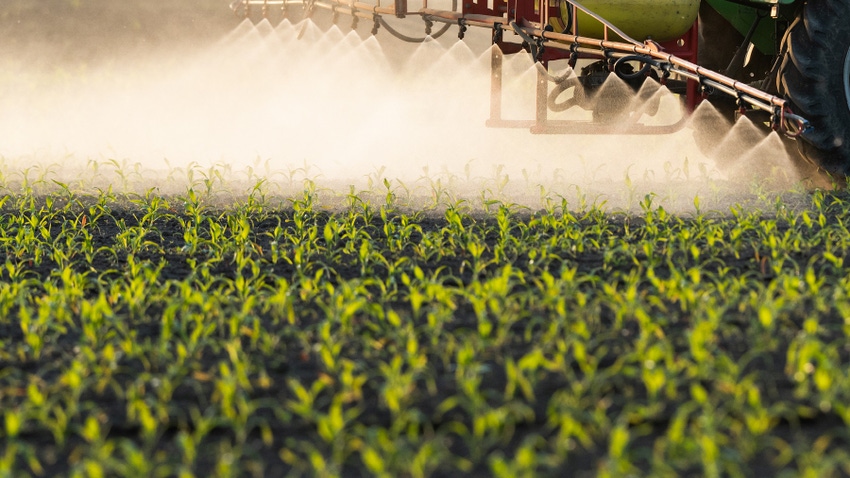April 12, 2024

Some farmers will be forced to find a new source for their water for pesticide applications, for some it's due to the announcement of water usage restrictions in Iowa and for others it could be the loss of a piece of leased land. No matter the reason for the loss of the water source, farmers have to keep their eyes on an alternative water source.
The visible and invisible
Obvious water quality concerns might be debris or suspended solids like soil particles in water. Herbicides can bind to soil suspended in water therefore reducing absorption into the plant, especially if the herbicide is left to sit in water with suspended solids prior to application. Filters may help reduce problems, but using water sources without suspended solids or debris is the best option to avoid product performance issues.
Dissolved minerals
Other water quality issues like dissolved minerals and pH are more challenging to understand and manage. High concentrations of dissolved minerals are of particular concern in some Iowa well water. While water hardness is measured based on the concentration of calcium and magnesium, other dissolved minerals like aluminum, iron, and sodium can also be a problem. Water high in these dissolved cations can attract negatively charged pesticide molecules and bind them, preventing or slowing their absorption into target plants. The key pesticide example for issues with water hardness is glyphosate; glyphosate labels recommend that applicators pre-treat the carrier water with ammonium sulfate (AMS). Other postemergence herbicides can also be negatively affected by water hardness, although not to the extent of glyphosate.
Water pH can influence the stability of pesticides in spray mixtures. Some products may be highly sensitive to solution pH, but many products mix and perform well across a wide range of pH. Pay attention to any mention of specific pH ranges or limits on pesticide labels.
Water temperature is an important factor that can affect the speed and quality of pesticide mixing, as well as the stability of mixtures. Water pulled directly from wells or surface water sources this spring may require warming for best pesticide mixing performance. Prior research from Purdue University found that of the four water temperatures they tested (41, 72, 102, and 133°F), the coldest and hottest temperatures reduced performance of some herbicides, while the middle two temperatures did not cause negative performance. Read more in the Purdue University Extension publication
“Water Temperature and Herbicide Performance: A First Look at New Research,” available as a free download.
Look for pesticide label language
The primary place to look for pesticide application management considerations related to water is the pesticide label. Look for specific language related to water hardness, water conditioners, pH of spray solutions, and pH buffering or acidifying solutions. Some product labels will recommend the addition of a product to address specific water quality concerns. In other cases, labels may prohibit the use of certain products that may alter the pH or other characteristics of the mixture. If the label recommends adding a specific product to remediate issues, pay special attention to the recommended mixing order for that product.
It is important to note that numerous adjuvants are sold as ‘AMS replacements,’ and while they may be equally effective as AMS at treating hard water, they often do not provide the same benefit as AMS in herbicide uptake and translocation in plants. If a label recommends using AMS at a particular rate, best practice is to follow the label recommendation.
Testing is key
If you’re unsure of the quality of a new water source, the best practice is to test each source prior to use.
Several options exist for testing water for quality concerns:
Temperature: thermometers provide reliable temperature measurements
Suspended solids: collect a water sample in a glass jar to observe for settling of solids
Dissolved minerals and pH: both at-home kits and laboratories can provide useful information, depending on the preciseness of data needed. Retailers that sell swimming pool supplies offer at-home kits that are fairly inexpensive. Download this Purdue publication for more information on testing options.
Can I reduce my carrier volume?
Some applicators may consider reducing carrier volume to conserve water this spring. Reducing water volume may impact pesticide efficacy by negatively affecting spray coverage; this is primarily a concern with postemergence products. The product label is the best reference for the minimum sufficient carrier volume for a pesticide, as well as other key factors to maintain adequate spray coverage, like adjuvants, nozzles, and spray pressure.
While water usage restrictions and changing water sources for pesticide application can add some uncertainty this spring, understanding the quality of your water sources now will minimize downtime and mixing or application problems.
Source: Iowa State University
About the Author(s)
You May Also Like






